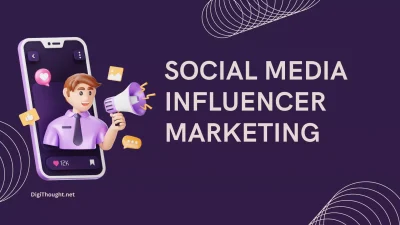Influencer marketing today is one of the most influential tools in digital marketing. But is your influencer campaign up to its job? Let’s not lose sight of the fact that tracking the performance of influencer marketing is the key to being able to measure return on investment (ROI) and gain a clear understanding of actionable insights which can help you improve your strategy.
If you have ever asked yourself how to track influencer marketing in real terms, this guide will walk you through the essential metrics, tools and practices required to monitor and improve your campaigns like a true pro.
Why Tracking Influencer Marketing Matters
Doing influencer partnerships without tracking is like releasing an arrow in the dark. To make informed decisions, you need visibility into how your campaigns are performing.
That’s why tracking is key:
- Measure ROI: Understand how each dollar spent on influencer marketing contributes to the growth of your brand.
- Identify High-Performing Influencers: Determine which influencers the public most resonates with.
- Optimize Campaigns: Get more bang for your future marketing buck by finding out what works and what doesn’t.
-
Ensure Transparency: Tracking enables it so that everyone — your brands, your influencers — can be held accountable for the product that is being put out.
Pro Tip: Metrics are not one-size-fits-all. Your key performance indicators (KPIs) should match up with your particular marketing objectives, whether those are raising brand awareness, increasing web traffic or generating sales.
Key Metrics for Tracking Influencer Marketing
For effective influence marketing tracking, you need to identify what metrics are most relevant to your campaign. Here’s are the key metrics to track during each stage of your funnel:
Brand Awareness Metrics
If your aim is amping up the visibility of your brand, these metrics will help you see how well your influencer campaign is reaching new audiences and getting them engaged:
- Reach: Number of unique users who view content from an influencer.
- Impressions: Aggregate total for times that content showed up, regardless of whether it was clicked.
- When to Boost: You will not be able to ward off loss of fans.
- Follower Growth: How many new followers an influencer campaign adds to a social media account during and after it, as well as what percentage of people unliked the influencer’s posts after they had completed one.
Example: An immersive influencer campaign might aim for 100,000 impressions and 5,000 new followers in the first two weeks.
Engagement Metrics
Engagement measures how interactive your audience is and how much they pay attention to influencer content. It also gives some insights into how well your message resonates:
- Likes: This is a basic measure of how much users appreciate the post.
- Comments: Look for meaningful and relevant comments that show genuine interest.
- Shares: This is a strong indicator of engagement, where the audience feels that your message was valuable enough to repost.
- Click-Through Rate (CTR): The number of people who clicked on a link within the post, divided by the total impressions.
Pro Tip: Always analyze the engagement rate as a percentage of the influencer’s total followers. This will help you decide whether their audience is active and authentic.
Conversion Metrics
For campaigns aimed at driving tangible actions like sales or sign-ups, conversion metrics are essential.
- Income Generated by Sales? Track the amount of direct revenue that you can attribute to an influencer event.
- Usage of Promo Codes? Give unique promotional codes to each influencer to make it easy for you to track purchasing initiatives that they generate from their audience.
- Affiliate Links: Use uniquely tagged affiliate links to monitor conversions.
- Lead Generation: Measure how many users fill out forms after coming into contact with your content or sign up for newsletters from you.
Sentiment Metrics
But rather than just going on visualizations, you need to look at how your audience is feeling with regard to the influencer content associated with your brand. That is where tools such as sentiment analysis come in handy.
- Positive Mentions: Instances where users talk favorably of your brand.
- Neutral/Negative Feedback: Catch-all for areas of improvement based on less-than-positive responses to your campaign.
Additional enhancement: With scholars’ notion that we can “Follow less-stated, greater-stated,” you’re mapping a course for consummate expertise that your clients will follow.
Tools for Measuring Influencer Marketing Performance
Technology successfully tracks influencer campaigns, but tools help make the difference. Here are some more efficient ways to streamline your efforts:
Analytics Tracking Tools
- Google Analytics: Useful for tracking traffic referrals and conversions from influencer campaigns.
- UTM Parameters: Create custom URL tags to help you track clicks and traffic back to your website.
- Social Media Insights: Instagram and TikTok provide detailed analytics on reach, engagement and profile views.
All-in-One Influencer Marketing Platforms
Platforms like Aspire, Grin, and Upfluence allow you to:
- Track performance from numerous campaigns.
- Monitor individual influencer metrics.
- Evaluate ROI and produce comprehensive reports.
Coupon Code Managers
This is where apps like Refersion or affiliates dashboards come into their own — helping save on redemptions and track who’s redeemed what codes.
Tools for Sentiment Analysis
Tools like Brandwatch or Mention are very effective for monitoring how users feel about such influencer-driven brand mentions.
You industry pro, you: Outsourcing tracking just means that you still need to review data and to align it with your campaign objectives.
Quality to be Concerned about Tracking Influencer Marketing
For the most accurate and actionable insights, follow these quality guidelines when tracking your influencer marketing campaigns.
Set Clear Goals
Before you start a campaign, define what success looks like. Do you want to boost website traffic by 20%? Make 500 purchases? Your KPIs need to be SMART (Specific, Measurable, Attainable, Relevant, and Time-Bound).
Communicate with Influencers
Be open with your influencers about which metrics you’re measuring and how you want them to feed back to you. Encourage them to share their channel’s analytics to ensure transparency.
Employ Tracking Devices Developed In-House
In such cases, you might want to assign influencers a special link, promotional code, or affiliate tags, tying their work directly to actual results.
Live Monitoring of the Campaigns
Don’t wait until the campaign ends to see larger changes in your ROI. In the course of doing live statistics analysis, you will have the chance to make adjustments that are essential at this stage of the work. For example, if the number of views isn’t rising as expected, you might think about how to adjust an influencer’s approach.
Analysis of Data After a Campaign
Afterward, you should review the data to determine what worked and what didn’t. Use these insights in order to put new strategies into use.
Measuring Success Over Time
Influencer marketing isn’t just about launching a one-off campaign. The real power happens when you build long-term relationships with high-performing influencers and create a consistent narrative around your brand.
By tracking your KPIs not just during campaigns but also over time, you can:
- Catch trends.
- Cultivate real brand partnerships.
- Keep a solid, trust-based relationship with your followers.
Conclusion
At first it may be intimidating, but if you want to do good influencer marketing then make tracking a priority. By watching key indicators, using the right tools and following best practice guidelines you can be assured that your influencer marketing efforts will work better for you.



